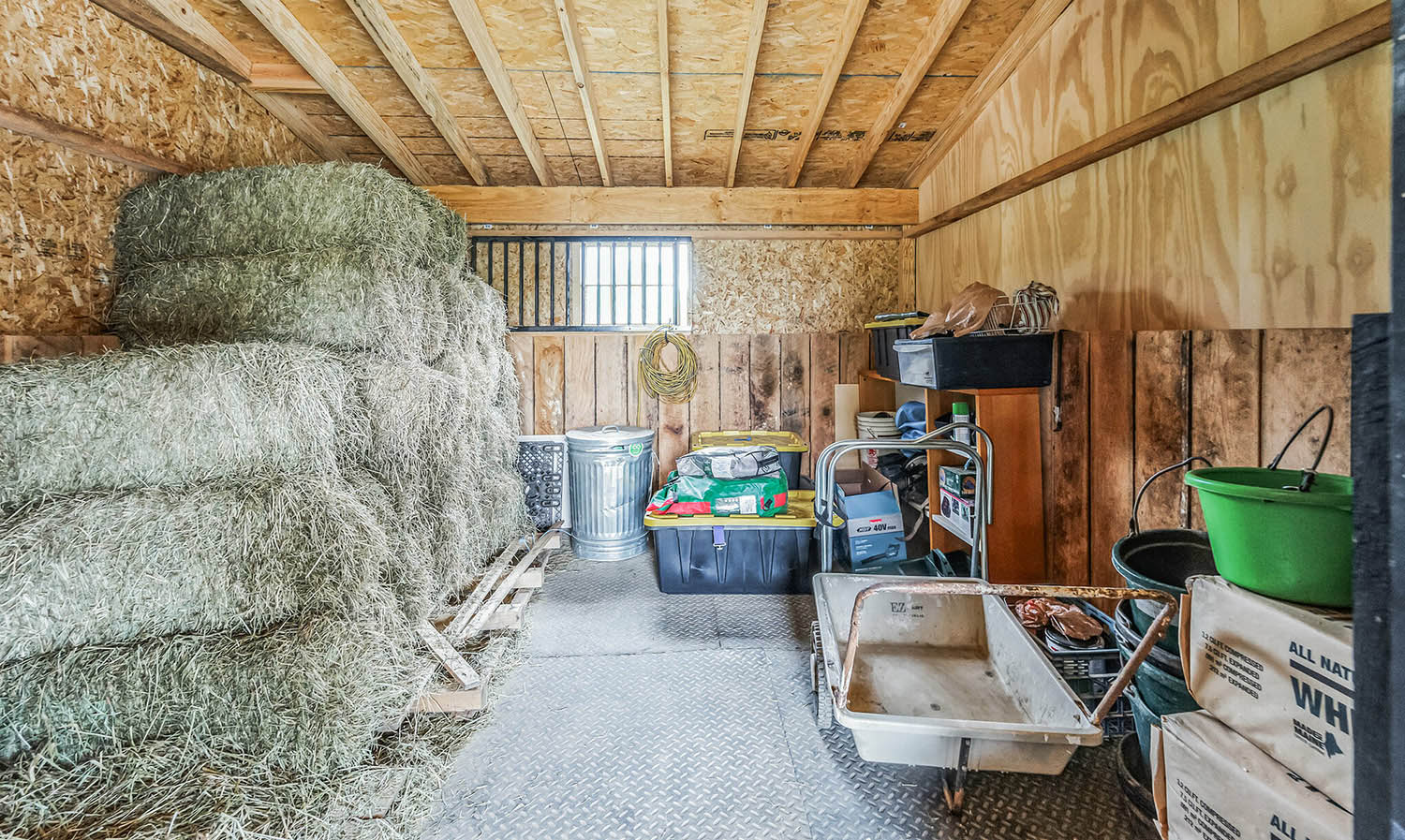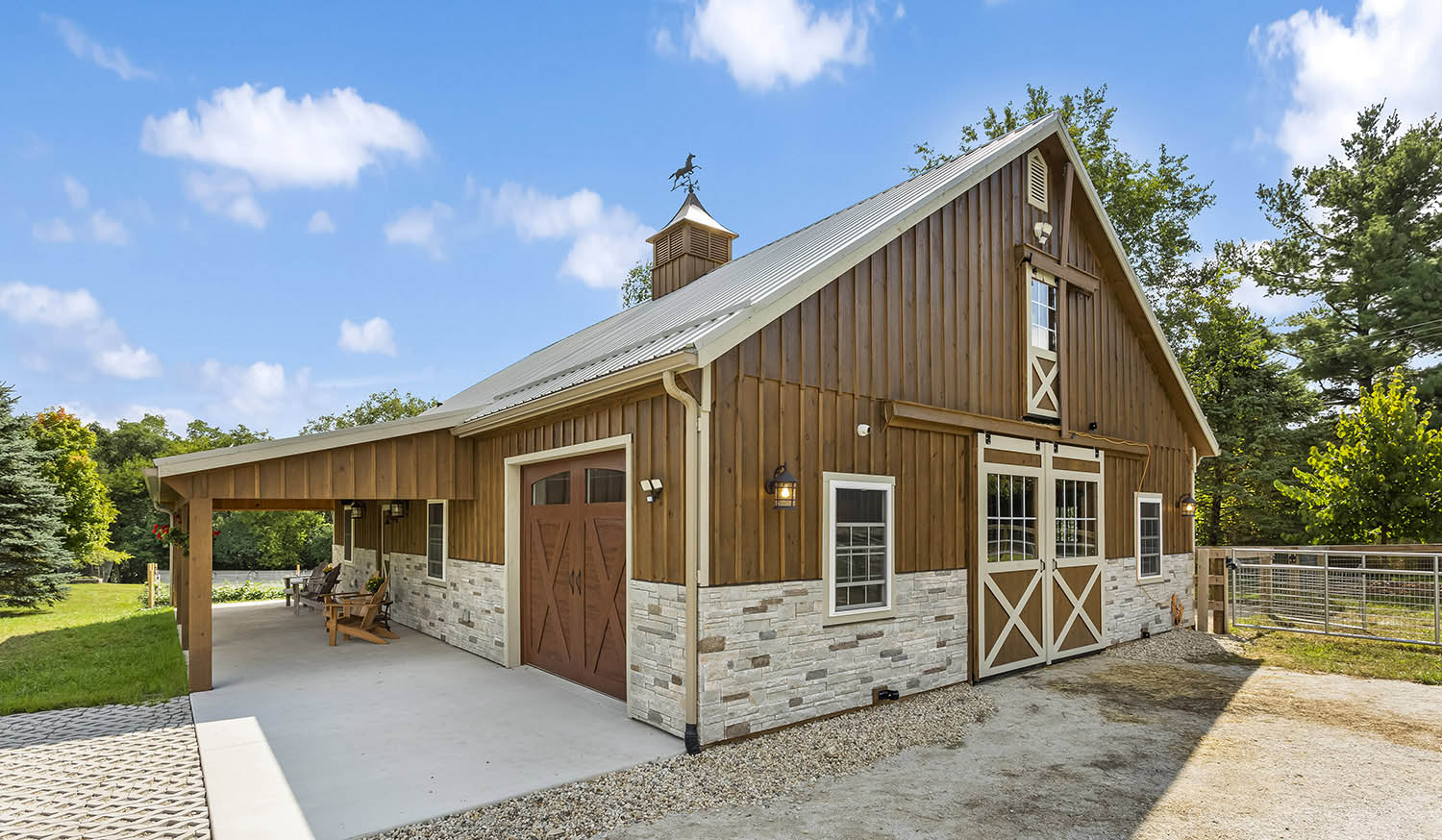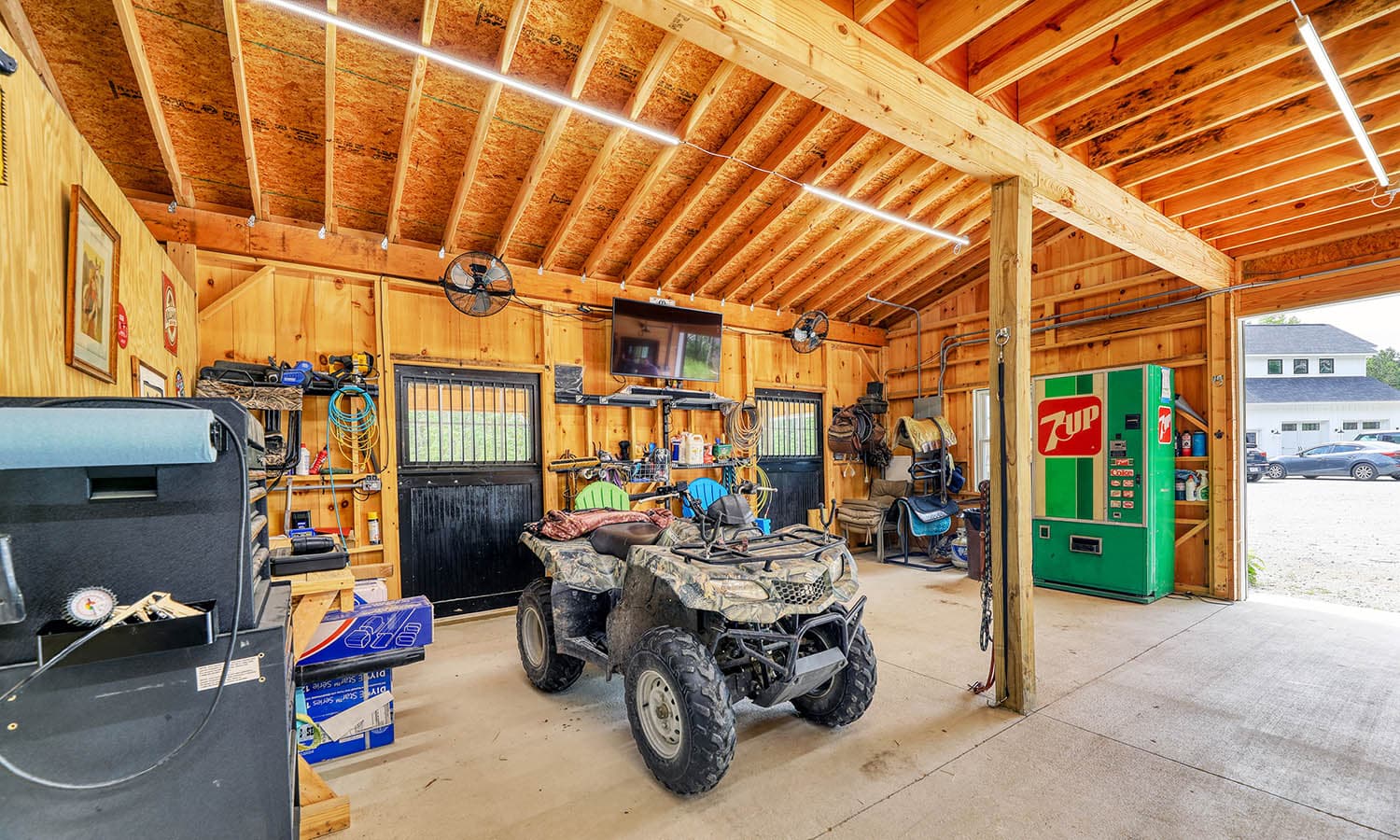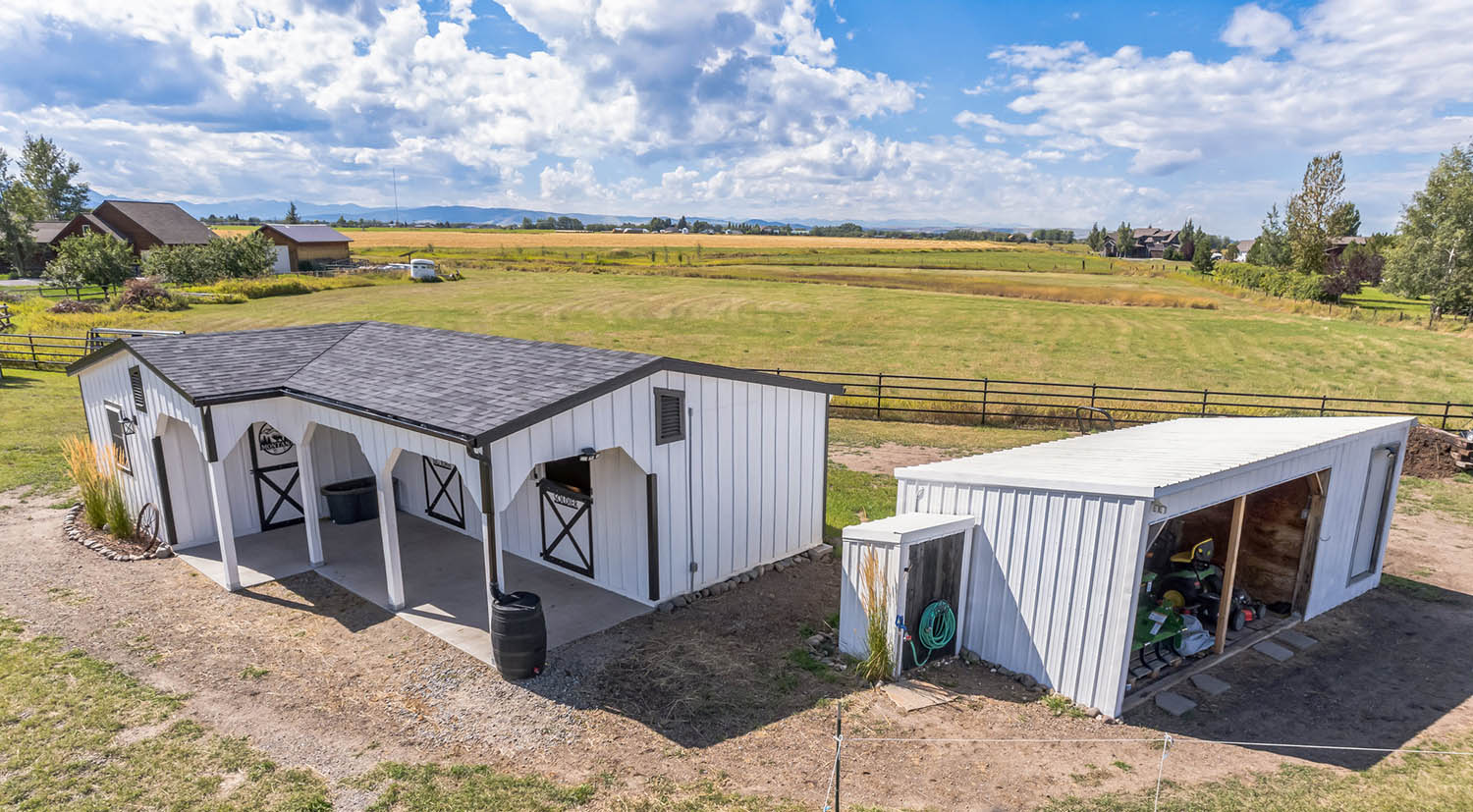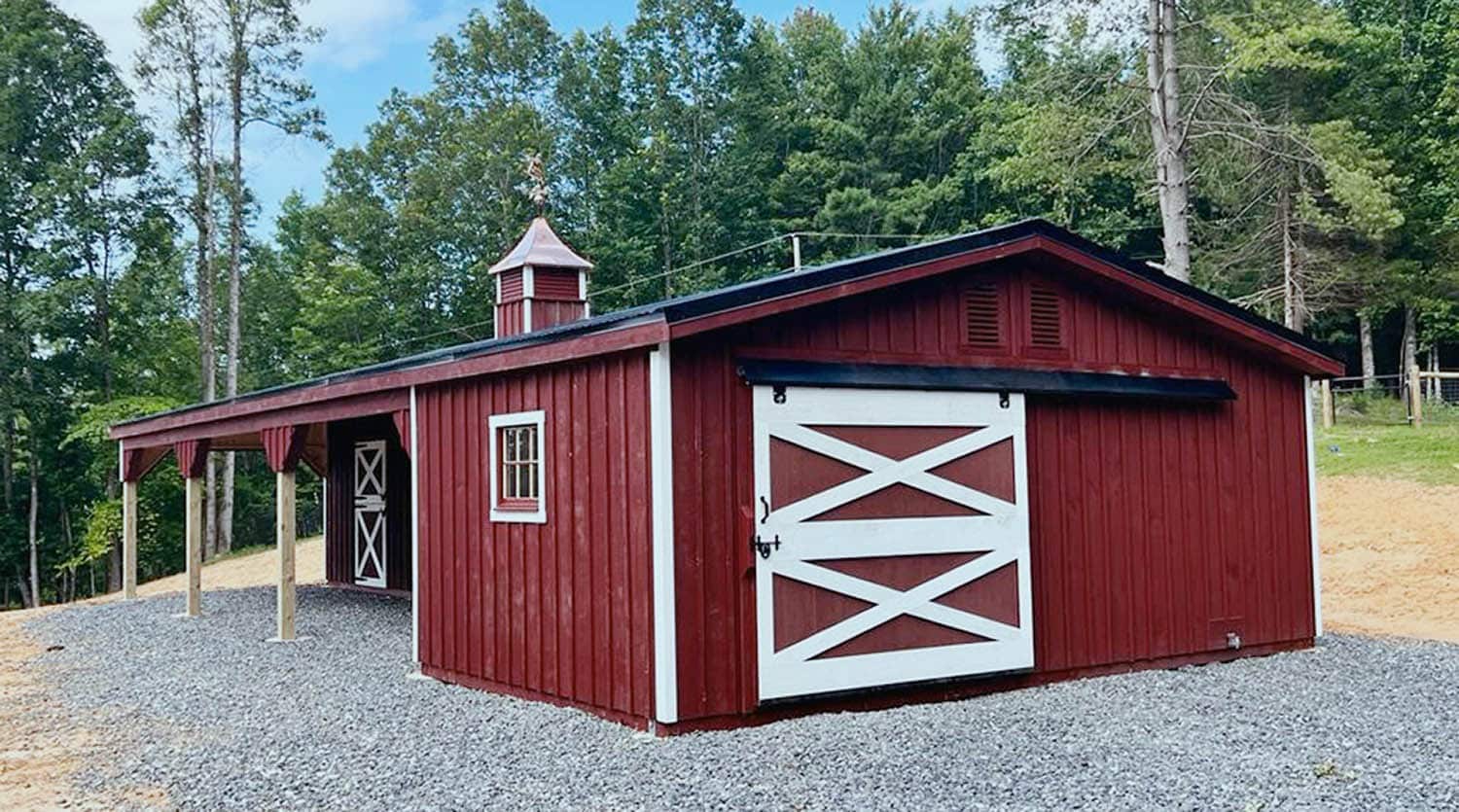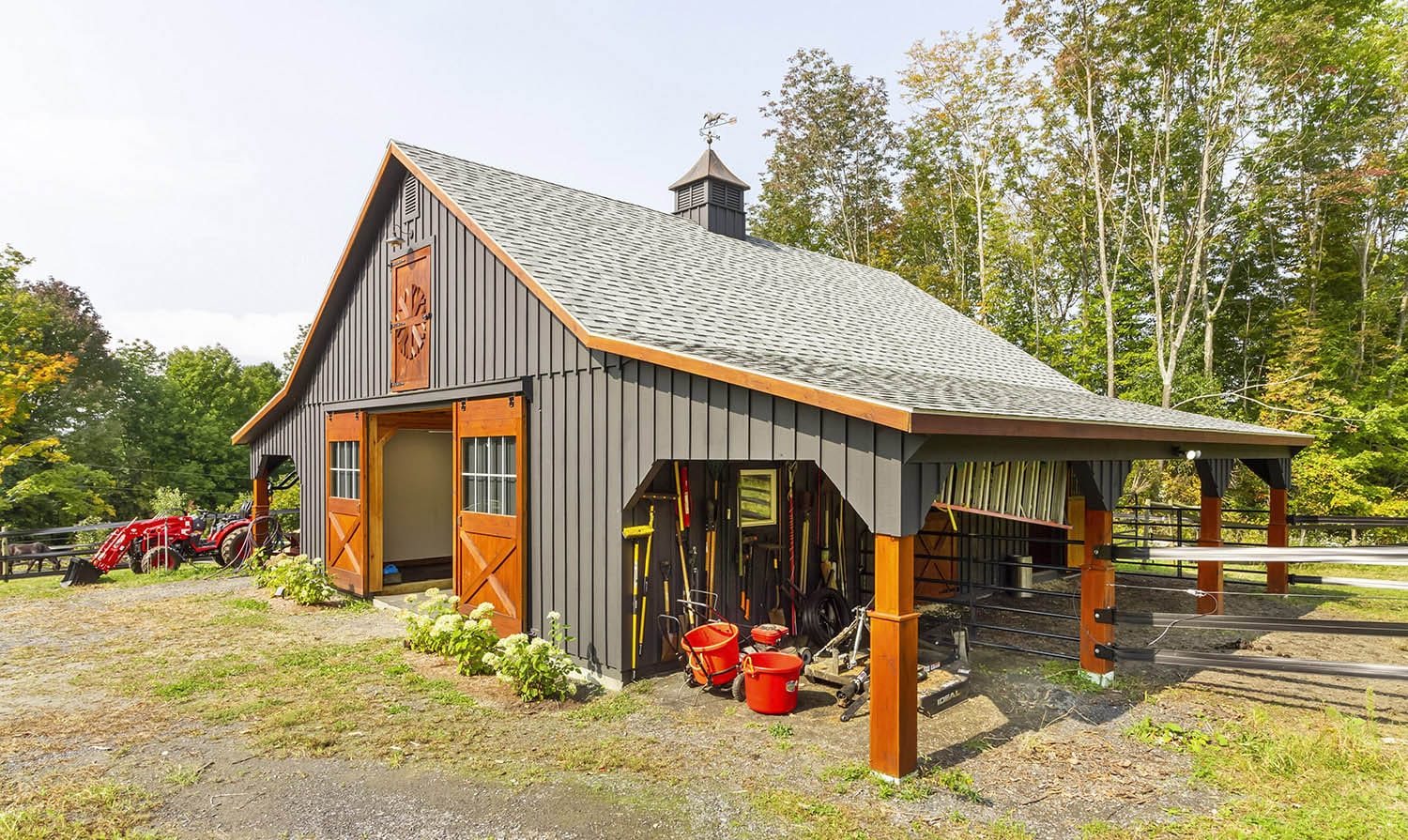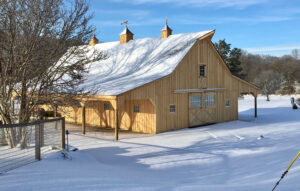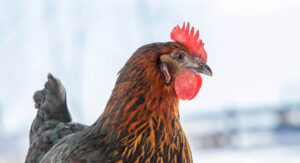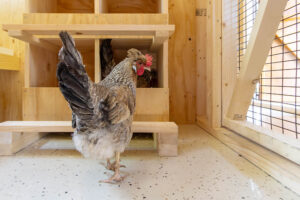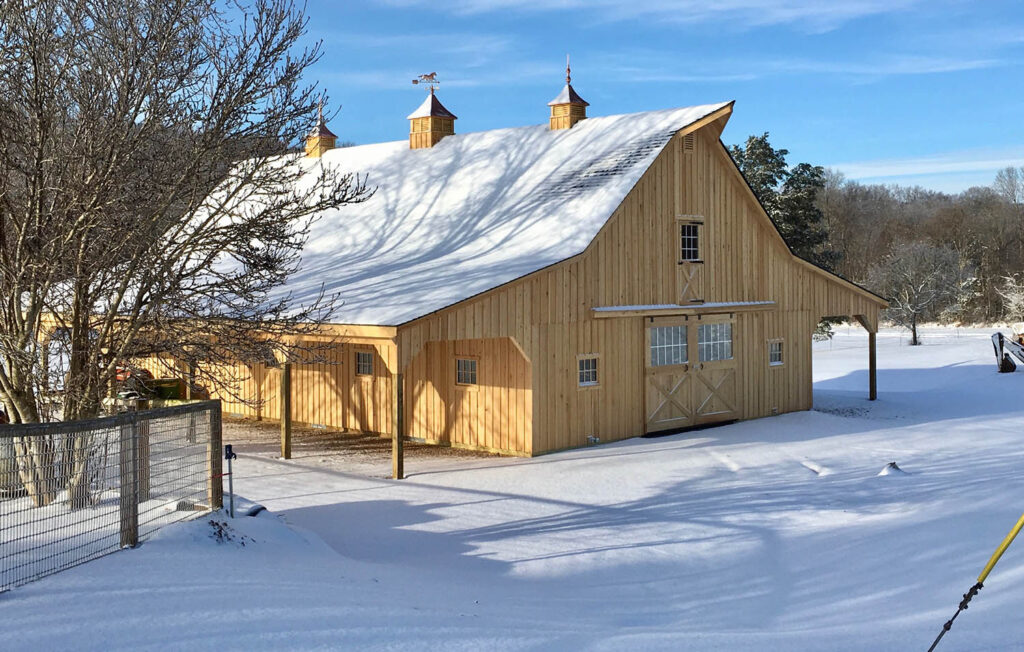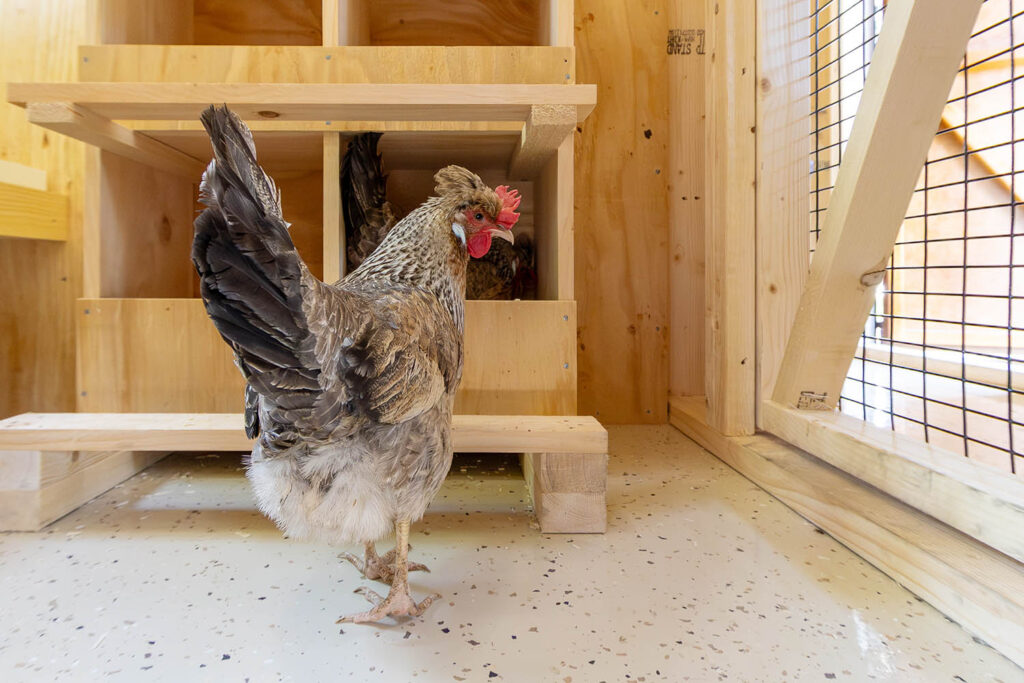The collection of farm equipment needed to maintain and operate a horse property can be an extensive array of variant sized implements and vehicles. Add to these items the requirement for storage of bulky supplies such as hay, grain, and bedding supplies, horse trailers, tools and tubs, and the pile of acquisitions grows to massive proportions.
Sheltering these valuable assets from the vagaries of poor or extreme weather conditions such as high wind, heavy snowfall, ice damage, rust-inducing moisture/rainfall and also theft, will require special storage solutions. Especially those vulnerable to moisture such as hay and bedding.
The perfect time to address the storage topic is during the design phase of the horse farm development project. This time offers the opportunity to designate the appropriate sites and incorporate budget-friendly efficient methods to address this need.
When you consider many of the supplies are also highly flammable products of one sort or another, and that motorized vehicles with gasoline/diesel fuels, batteries and other combustible products can pose a fire hazard, locating them separately to the horse barn is more than just a great way to mitigate the risk of a barn fire. Smart placement for their storage can also save you financially on insurance premiums.
Ease Of Access Is Paramount
Whether it’s moving large round bales of hay at the height of summer or hitching up a horse trailer in snowy weather, the ease of access to the storage area is important for daily use. Not only will good access save time it may also save incidents that can cause costly damages and can even mitigate the risk of human or horse injuries that can result from poorly sized and/or thoughtlessly located buildings. Blind corners, tight turns, sharp edges of implements and awkward parking spots can all be avoided with careful planning.
Turning radius space for a 30 horsepower or greater sized tractor generally requires a significant area. While UTV/ATVs and skid steers can operate in tighter spaces, backing up hitched equipment such as mowers/hay wagons/horse trailers takes some prowess behind the wheel if the distance to the back of the building is a long haul.
Larger buildings will preferably be designed with two doors. One door located on the long side and most importantly, one located on the gable end (as this will also be accessible during snowy weather as no shedding of snow from the roof will occur). This allows for pulling large equipment through the building without the need for multiple back and forth maneuvering.
Trusses/rafters and any hanging light fixtures will need to be high enough to provide good clearance for the tractor bucket/spear when lifted to recover stacked hay, and entranceways as well as interior clearance heights will need to be big enough to clear the vehicle height of delivery equipment or daily use farm trucks/trailers/tractors. A height of 16-18’ is recommended for tractor-trailer access though be aware it doesn’t allow enough height for tipping up dump trucks etc. if you are having footing material installed.
Consider that the depth of the storage building is often better off kept shallow, under 20’, to allow for a car/truck or piece of equipment to be parked underneath the roof, but not so deep as to require backing up and tail to nose parking of implements that always ensures annoyances in having to move multiple pieces of equipment to get to the one you need.
As the building is not as deep, the structure should be made wider with ‘bays or compartments where areas can be utilized for specific purposes. The addition of a secure enclosed workshop area for tools to repair and maintain equipment is also a great idea. Keeping tools handy will encourage the operator to ‘fix’ things on the spot rather than wait to address a repair issue, which is not only usually safer use wise of the equipment. Prompt repairs can also save a lot of time and money.
Many materials used in vehicle maintenance are also flammable as well as messy to use, so keeping them out of the basement or horse barn is also a welcome factor for those tasked with their cleanup and use.
Situate Your Storage Shelter Smartly
As farm equipment requires space to operate and is also noisy to use, siting your storage space away from the house is a good idea. Security concerns are readily addressed with technology coverage via video/cameras and alarms, so the necessity to locate storage areas just outside the bedroom window is not necessary. Though do be certain to have a path of easy access to the storage area if your snow-plowing equipment lives there!
Face the structure away from prevailing winds to avoid adverse weather intrusion of blowing snow and rain to the interior, and ensure any large doors, especially those composed of lightweight aluminum, have central footer support and central bolting as well as bolting to the sides of the door frame. A man-sized door incorporated at the front of the structure for in/out use will offer the ability to secure the building from both inside and outside.
Equipment Has Footing Needs Too
It’s not just horses that do best living/working on suitable footing; it also applies to equipment and forage/bedding supplies.
Vehicle tires are best placed off soil-inducing moisture, as moisture will cause tires to rot.
Protecting the tires from the intense hot rays of the sun and parking equipment on either gravel or rubber mats is a good idea to preserve the integrity of the tires especially if they are stationary for long periods of time. A few planks of wood laid alongside each other can also suffice as a good base for placement of tires to keep them off the soil.
For implements or trailers that are to be stored for some duration, the hitch stand should similarly be placed on a hard material such as a breeze block or plank of wood. Otherwise over time the stand will sink into soft sand/soil or similar materials, making it difficult to hitch up when you need it again despite the stand’s adjustability factor.
Hay and bedding should not be stored directly on concrete or soil as moisture will permeate from the ground up, however dry the surface may appear. Heavy duty tarpaulins are a good moisture-barrier, and though expensive can be re-used if they are swept clean and rolled back when cleared of supplies so that driving on them is avoided.
The Shed-Row Barn/Lean-To Solution
The lean-to or overhang has been around for eons as a shelter for both man and beast. Storage wise the lean-to’s open-sided nature does not provide complete protection of hay/bedding supplies from wet weather. The lean-to also offers no security for the contents it houses.
The shed row barn with its shed roof design incorporates the advantage of a budget-friendly structure for storage. A shed roof is that the shedding of water/ice/snow to the back of the structure will all be to one side of the building so ensure any guttering system is substantial enough to do the heavy ‘lifting.’ If no gutter system is implemented drainage to remove water from the back of the building is a good idea.
The shed roof design can be prone to ‘lift-off’ in high winds, especially if the building is poorly sited into prevailing winds or if the rafters and sheathing are not properly attached to the framing members. The pillar support system of the structure should also be sturdy and set deep enough into the ground to protect it from wind lift.
The shed-row barn with a shed roof is so user-friendly and cost effective, that as long as care is taken to construct the structure with proper building methods and to regional building code standards the shed-row barn is a god-send to most farmers, offering the perfect storage solution. Highly functional and adaptable for multi-uses, sections can easily be enclosed for tool sheds or workshops. The shed roof at the front of the building can be elevated to accomplish significant extra height benefits. Site preparation for a shed-row build is also minimal, making it even more budget-friendly.
Change of use for a shed-row building is also quick and cost-effective to achieve as it can be converted to horse stabling or even renovated later to living space.
A Clear Space is a Safe Space
Having room to safely store and put in all that farm stuff not only keeps the property looking its best, tidy and organized. A clear space is also a safe space for horses to be handled and ridden.
It is well-worth the peace of mind to plan good storage areas for multiple purposes during the initial phase of the horse property development project. And of course, it is never too late to add a shedrow or other structure to an existing farm or backyard horsekeeping operation.
The shed-row modular design is by nature sectional, and small and even extremely long rows can easily be installed on a prepared site to accommodate a myriad of needs. As shed-row barns lend themselves to over-the-road transport due to their widths, this stylish design is extremely popular.
The best way to solve the storage quandary is to work with a company that offers a variety of barn sizes, siding, roofing options and styles for best selection and can offer nationwide delivery so designs and materials are not limited to local availability of product.
CLICK HERE TO DOWNLOAD
Horizon’s Horse Barn Buyer’s Guide and Price List


